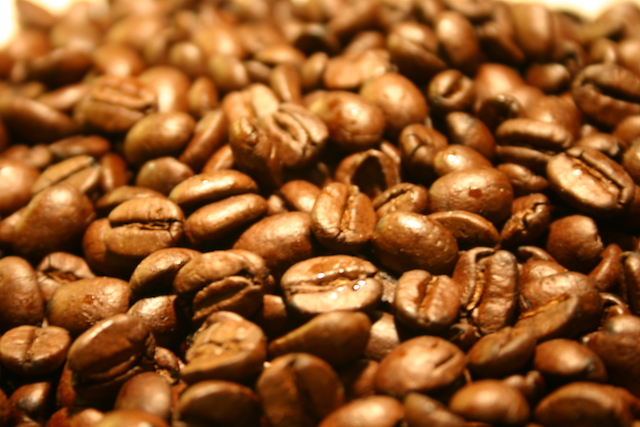How To Increase Iron Levels
Iron is a vital mineral that plays a crucial role in various bodily functions, including the formation of hemoglobin, the protein in red blood cells responsible for transporting oxygen throughout the body. Low iron levels can lead to iron deficiency anemia, which manifests as fatigue, weakness, and other serious health issues. Understanding how to increase iron levels is essential for maintaining optimal health and energy. This guide will explore effective strategies, dietary changes, and lifestyle adjustments to help you increase your iron levels naturally.
Importance of knowing how to increase iron levels
Iron is not important and essential for survival. It aids in the production of hemoglobin, supports energy production, and contributes to immune function. Iron also plays a role in cognitive function, affecting mood and mental clarity. Without adequate iron levels, your body cannot efficiently transport oxygen, leading to fatigue and decreased physical performance. Understanding the importance of knowing how to increase iron levels sets the foundation for recognising the need to increase your levels.
Identifying low iron levels
Before discussing how to increase iron levels, you need to understand the signs and symptoms of iron deficiency. Common indicators include:
-
- Fatigue: A lack of energy is often the first noticeable symptom.
- Pale skin: Reduced haemoglobin levels can lead to a pale appearance.
- Shortness of breath: Even mild physical activity may leave you feeling breathless.
- Dizziness or lightheadedness: Insufficient oxygen supply to the brain can cause these sensations.
- Cold extremities: Poor circulation due to low iron may result in cold hands and feet.
- Brittle nails: Weak and easily broken nails can indicate a deficiency.
If you experience any of these symptoms, it is advisable to consult a healthcare professional for a blood test to check your iron levels.
Dietary sources of iron
One of the most effective ways to increase iron levels is through diet. Iron exists in two forms: heme and non-heme iron.
Heme iron
Heme iron is derived from animal sources and is more easily absorbed by the body. Excellent sources include:
-
-
-
- Red meat: Beef, lamb, and pork are rich in heme iron.
- Poultry: Chicken and turkey are good options as well.
- Fish and seafood: Salmon, tuna, and sardines provide not only heme iron but also omega-3 fatty acids.
-
-
Non-heme iron
Non-heme iron is found in plant-based foods and is not as readily absorbed, but it is still crucial for those following a vegetarian or vegan diet. Key sources include:
-
-
- Legumes: Lentils, chickpeas, and beans are excellent for boosting iron levels.
- Dark leafy greens: Spinach, kale, and Swiss chard are high in non-heme iron.
- Nuts and seeds: Pumpkin seeds, almonds, and cashews are great snack options.
- Fortified foods: Many breakfast cereals and bread products are fortified with iron.
-
Combining foods for better absorption
To maximize iron absorption, combine non-heme iron sources with vitamin C-rich foods. Foods high in vitamin C include citrus fruits, strawberries, bell peppers, and broccoli. For example, adding a side of orange slices to your spinach salad can significantly enhance iron absorption.
Cooking methods to enhance iron intake
How you prepare your food can also affect iron absorption. Using cast iron cookware can be beneficial, especially for acidic foods like tomato sauce, as this can increase the iron content of your meals. Soaking, sprouting, or fermenting legumes and whole grains can reduce phytate levels, which inhibit iron absorption.
Lifestyle changes to support iron levels
In addition to dietary changes, several lifestyle modifications can help you increase your iron levels.
Avoiding iron inhibitors
Certain substances can hinder iron absorption. Being aware of these can help you make informed dietary choices:
-
-
- Calcium: While essential for bone health, calcium can interfere with iron absorption. Try to consume calcium-rich foods separately from iron sources.
- Tannins: Found in tea and coffee, tannins can inhibit iron absorption. If you enjoy these beverages, consider drinking them between meals rather than during
- Phytates: Present in whole grains and legumes, phytates can bind to iron and reduce absorption. Cooking methods like soaking and sprouting can help mitigate this.
-
Staying hydrated
Adequate hydration supports overall health, including nutrient absorption. Aim for at least eight glasses of water a day, adjusting based on your physical activity level. Water aids digestion and helps transport nutrients throughout the body.
Regular physical activity
Engaging in regular exercise can enhance blood circulation, which promotes better nutrient absorption, including iron. Activities such as walking, swimming, or cycling can boost your overall health and energy levels.
Avoiding excessive iron supplements
While it is essential to maintain adequate iron levels, be cautious with iron supplements. Overloading on iron can lead to toxicity and health issues. Always consult with a healthcare provider before starting any supplements, as they can guide you on the appropriate dosage and form.
Monitoring iron levels
Regular check-ups are crucial for maintaining healthy iron levels. Blood tests can help monitor your iron status and guide dietary and lifestyle adjustments. Common tests include:
-
- Complete Blood Count (CBC): This test measures various components of your blood, including haemoglobin levels.
- Ferritin test: Ferritin is a protein that stores iron, and this test indicates your body’s iron reserves.
- Serum iron test: This measures the amount of iron in your blood.
- Total Iron-Binding Capacity (TIBC): This test evaluates how well iron is transported in the blood.
Adjusting your plan based on results
Based on your test results, you may need to adjust your dietary plan or consider supplementation. Always work with a healthcare professional to tailor your approach to your specific needs, ensuring you address the root cause of low iron levels.
Additional strategies to increase iron levels
Incorporating a variety of strategies can further support your efforts to boost iron levels:
Meal planning
Plan meals that focus on including iron-rich foods, especially if you follow a vegetarian or vegan diet. Consider creating a weekly meal plan that includes a variety of sources, ensuring that you meet your nutritional needs.
Educate yourself on food labels
When shopping, take the time to read food labels. Look for fortified foods that contain added iron, and pay attention to serving sizes to ensure you’re getting enough.
Be mindful of alcohol consumption
Excessive alcohol can interfere with nutrient absorption and negatively impact overall health. Moderation is key; consider limiting your intake to support better iron levels.
Consider cooking with acidic ingredients
Incorporating ingredients like lemon juice or vinegar into your meals can enhance the absorption of non-heme iron. Consider using these in salad dressings or marinades for added flavour and health benefits.
Conclusion
Increasing your iron levels is a manageable goal with the right dietary choices and lifestyle adjustments. By incorporating iron-rich foods, understanding how to enhance absorption, and making mindful changes to your routine, you can effectively support your body’s iron needs. Whether you are dealing with low iron levels or simply want to boost your overall health, these strategies will set you on the right path.
Take action for better health
Monitoring your iron levels and making dietary adjustments can significantly impact your overall health and vitality. Consult with healthcare professionals for personalized advice, and empower yourself with knowledge about your nutritional needs. By prioritizing your iron levels, you can improve your energy, support cognitive function, and enhance your overall quality of life.
Remember, maintaining adequate iron levels is not just about preventing deficiency; it’s about optimizing your health for a more energetic and fulfilling life. Start today by implementing these strategies, and enjoy the benefits of increased iron levels in your daily life.



